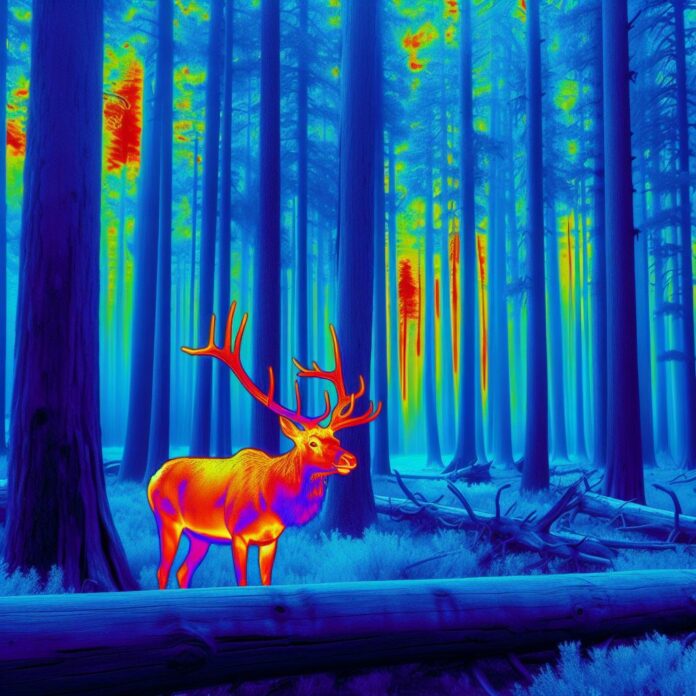A thermal scope is a specialized device that utilizes thermal imaging technology to detect and display differences in heat signatures emitted by objects and living beings. This advanced optical instrument offers a range of applications and benefits across various fields, including hunting, search and rescue operations, and military and law enforcement activities.
A thermal scope works by detecting the infrared radiation emitted by objects and then converting it into a visible image that shows variations in temperature. This allows users to see beyond traditional visible light, making it particularly useful in low light conditions or situations where camouflage or concealment may be a factor.
The key components of a thermal scope include the optics, detector, and display. The optics collect and focus the infrared radiation onto the detector, which converts the radiation into an electrical signal. The display then processes the signal and presents the thermal image to the user.
In terms of applications, thermal scopes have proven highly effective in hunting and wildlife observation, allowing hunters to track and locate game even in the dark. They are also invaluable in search and rescue operations, as they can help locate missing persons or spot survivors in difficult terrain. In the military and law enforcement domain, thermal scopes provide enhanced situational awareness, allowing users to detect potential threats or concealed targets.
There are several advantages to using a thermal scope. Firstly, these devices can detect heat signatures, making them useful for identifying animals or individuals even in total darkness. Thermal scopes offer enhanced visibility in low light conditions, surpassing the capabilities of traditional night vision devices. They also provide increased range and detection capability, allowing users to detect objects and potential threats from a distance.
When selecting a thermal scope, there are certain considerations to keep in mind. Resolution and image quality play a crucial role in the clarity and detail of the thermal image. A higher resolution ensures finer details and better target identification.
Refresh rate and detection range are important factors, as a faster refresh rate provides smoother and clearer images, while a longer detection range allows for spotting targets at greater distances. Finally, battery life and durability are crucial for reliability and longevity, especially in demanding outdoor or tactical environments.
What is a Thermal Scope?
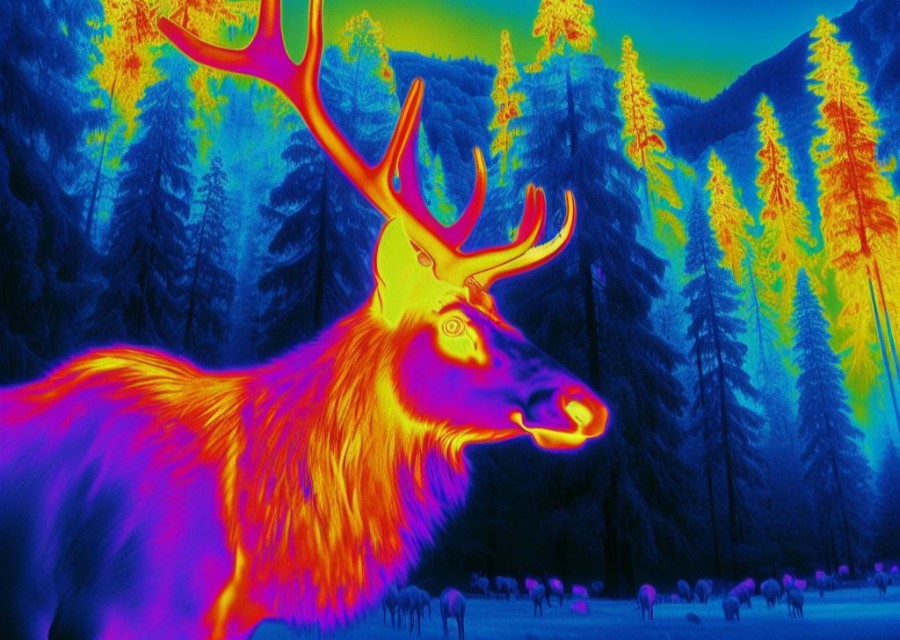
A thermal scope, also known as a thermal imaging scope, is a cutting-edge device that utilizes thermal imaging technology to identify and display objects based on their distinct heat signatures.
This advanced tool finds application in a wide range of scenarios including hunting, surveillance operations, and search and rescue missions. Unlike conventional scopes that rely solely on visible light, the thermal scope is specifically designed to detect the infrared radiation emitted by objects and convert it into a visible image for the user.
The main advantage of thermal scopes lies in their ability to operate effectively in low-light conditions or situations with limited visibility. They achieve this by detecting the heat emitted by living organisms or objects, even when surrounded by complete darkness.
Furthermore, they have the capability to distinguish between various objects based on their temperature variances, making them highly versatile for identifying concealed targets and tracking movements.
When selecting an ideal thermal scope, it is crucial to consider certain key factors. These factors include the detection range, resolution, and refresh rate. Opting for higher detection ranges and resolutions greatly enhances image quality, allowing for clear identification of targets over longer distances. Additionally, a faster refresh rate contributes to a smoother image rendering process, minimizing image lag and providing an overall enhanced user experience.
How Does a Thermal Scope Work?
A thermal scope operates by detecting and capturing heat signatures emitted by objects, animals, or people. It utilizes a highly sensitive thermal sensor that is capable of detecting even the slightest temperature differences. Once the heat signatures are detected, the thermal scope transforms them into an image that can be viewed by the user.
The key components of a thermal scope include the thermal sensor, optics, display screen, and image processing software. The thermal sensor is responsible for detecting the heat signatures, while the optics assist in focusing and enhancing the image quality. The display screen enables the user to view the thermal image, and the image processing software handles the captured data to create a clear and detailed thermal image.
Thermal scopes find extensive use in various applications, including hunting, wildlife observation, search and rescue operations, as well as military and law enforcement. They offer a significant advantage in these fields by enabling users to see in complete darkness, through fog and smoke, and even detect concealed targets or individuals.
When selecting a thermal scope, it is important to consider several factors. Resolution and image quality play a crucial role in determining the clarity and level of detail in the thermal image. The refresh rate and detection range determine how quickly and how far the thermal scope can detect heat signatures. Battery life and durability are also essential, particularly for outdoor or extended use.
What Are the Key Components of a Thermal Scope?
The key components of a thermal scope include:
- Thermal Sensor: This is the core component of a thermal scope that detects and measures the heat signatures emitted by objects. It converts the heat energy into electrical signals.
- Optical System: The optical system consists of lenses and mirrors that focus and direct the infrared radiation detected by the thermal sensor. It helps create a clear and detailed thermal image.
- Display Screen: The display screen shows the thermal image captured by the thermal sensor. It allows users to visualize the heat patterns and distinguish between different objects based on their temperature variations.
- Image Processing Unit: The image processing unit enhances the captured thermal image by applying algorithms to improve contrast, sharpness, and overall image quality. It helps in better target identification and recognition.
- Power Source: Thermal scopes require a power source, typically in the form of batteries, to operate. The power source provides the necessary electrical energy to run the thermal sensor, image processing unit, and display screen.
- Controls and Interface: Thermal scopes have buttons, dials, or touch screens that allow users to adjust various settings such as brightness, zoom level, reticle selection, and image polarity. The interface enables easy operation and customization of the thermal scope.
Considering these key components when choosing a thermal scope can help you make an informed decision based on your specific requirements, such as the desired image quality, battery life, and ease of use.
Applications of Thermal Scopes
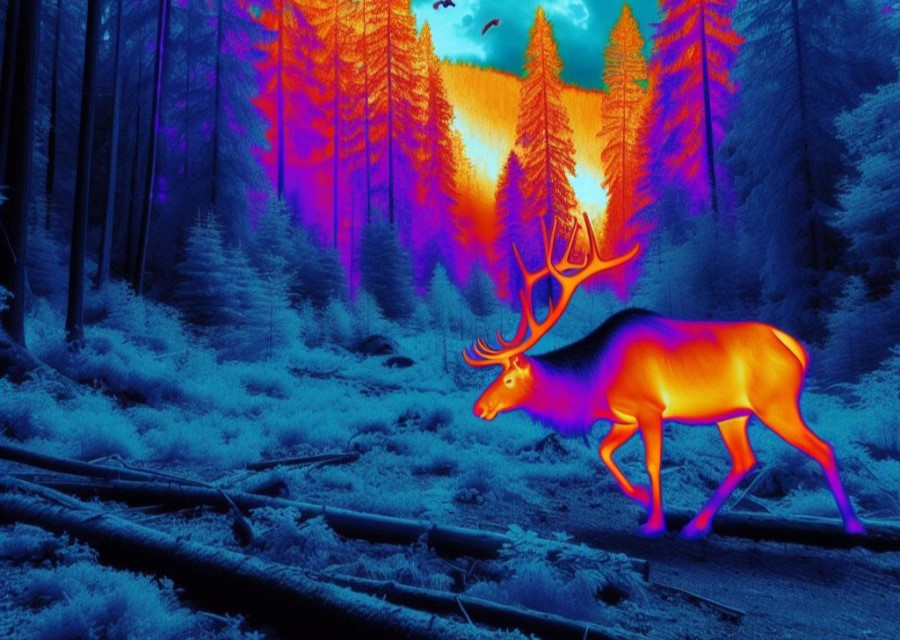
Discover the wide-ranging applications of thermal scopes and step into a world of enhanced vision. From hunting and wildlife observation to search and rescue operations and military and law enforcement tasks, these powerful tools have become indispensable in various domains.
Unveil the hidden landscape of nocturnal hunting, witness the swift and efficient operations of search and rescue teams, and delve into the crucial role thermal scopes play in military and law enforcement operations. Get ready to explore the incredible versatility of thermal scopes.
Hunting and Wildlife Observation
Hunting and wildlife observation are exciting activities for outdoor enthusiasts. The use of a thermal scope can greatly enhance these experiences.
1. Spotting wildlife: A thermal scope enables hunters and wildlife observers to easily detect heat signatures emitted by animals. This allows them to locate animals even in dark or dense vegetation. With a thermal scope, users can spot animals from a distance, ensuring a safer and more successful hunting or observing experience.
2. Enhanced visibility: In low light conditions, such as at dawn or dusk, a thermal scope provides improved visibility. It captures thermal radiation and converts it into a clear image, eliminating the need to rely solely on natural light. This allows hunters and wildlife observers to clearly see animals, even in challenging lighting situations.
3. Extended range and detection capability: A thermal scope offers users the ability to identify animals at long distances. By detecting heat signatures, it can reveal the presence of animals that may otherwise go unnoticed. With its extended range and detection capability, hunters and wildlife observers can cover larger areas and locate elusive wildlife.
When selecting a thermal scope for hunting and wildlife observation, it is important to consider factors such as resolution and image quality, refresh rate, detection range, battery life, and durability. These features contribute to the overall performance and reliability of the thermal scope, ensuring optimal results in the field.
By utilizing a thermal scope for hunting and wildlife observation, enthusiasts can elevate their experiences and increase their chances of success.
Search and Rescue Operations
Search and rescue operations are a crucial application of thermal scopes. These devices play a vital role in locating and rescuing individuals in various environments.
Thermal scopes, with their ability to detect heat signatures, are particularly valuable during search and rescue operations. They allow first responders and rescue teams to quickly identify the body heat of missing persons or survivors in areas with limited visibility or challenging terrain. The enhanced visibility in low light conditions offered by thermal scopes greatly assists search and rescue efforts, increasing the chances of locating individuals in time-sensitive situations.
The increased range and detection capability of thermal scopes are essential factors in search and rescue operations. They provide a broader view and can detect heat signatures from significant distances. This capability allows rescue teams to cover large areas efficiently and identify individuals who may be hidden or trapped in difficult-to-access locations.
When choosing a thermal scope for search and rescue operations, factors such as resolution and image quality are important considerations. Higher resolution and better image quality provide clearer and more detailed visuals, aiding in the identification of individuals.
Refresh rate and detection range also play a crucial role in ensuring optimal performance during search and rescue operations. Finally, battery life and durability are critical aspects to consider, as these scopes need to withstand harsh conditions and operate for an extended period to facilitate successful rescues.
Military and Law Enforcement
Both the military and law enforcement sectors heavily rely on thermal scopes for a variety of crucial reasons:
- Enhanced situational awareness: Military and law enforcement personnel greatly benefit from thermal scopes as they enable the detection of heat signatures, regardless of the darkness level. This remarkable visibility empowers them to effectively identify potential threats and take decisive actions.
- Augmented surveillance capabilities: Thermal scopes significantly extend the range and detection capabilities of military and law enforcement personnel, ensuring efficient monitoring of expansive areas. This proves to be especially advantageous during surveillance operations or when tracking specific targets.
- Efficacious camouflage detection: By detecting temperature differences, thermal scopes provide military and law enforcement professionals with enhanced capabilities to identify camouflaged individuals or objects that may remain concealed from traditional optical scopes.
- Nighttime operations: Military and law enforcement entities frequently operate in environments with limited light conditions. Thermal scopes offer superior visibility in such circumstances, enabling personnel to navigate, locate targets, and execute missions with precision and effectiveness.
When selecting thermal scopes for military and law enforcement purposes, it is vital to consider key factors such as resolution and image quality, refresh rate and detection range, as well as battery life and durability. These elements ultimately determine the efficiency and dependability of thermal scopes in tactical situations.
Advantages of Using a Thermal Scope
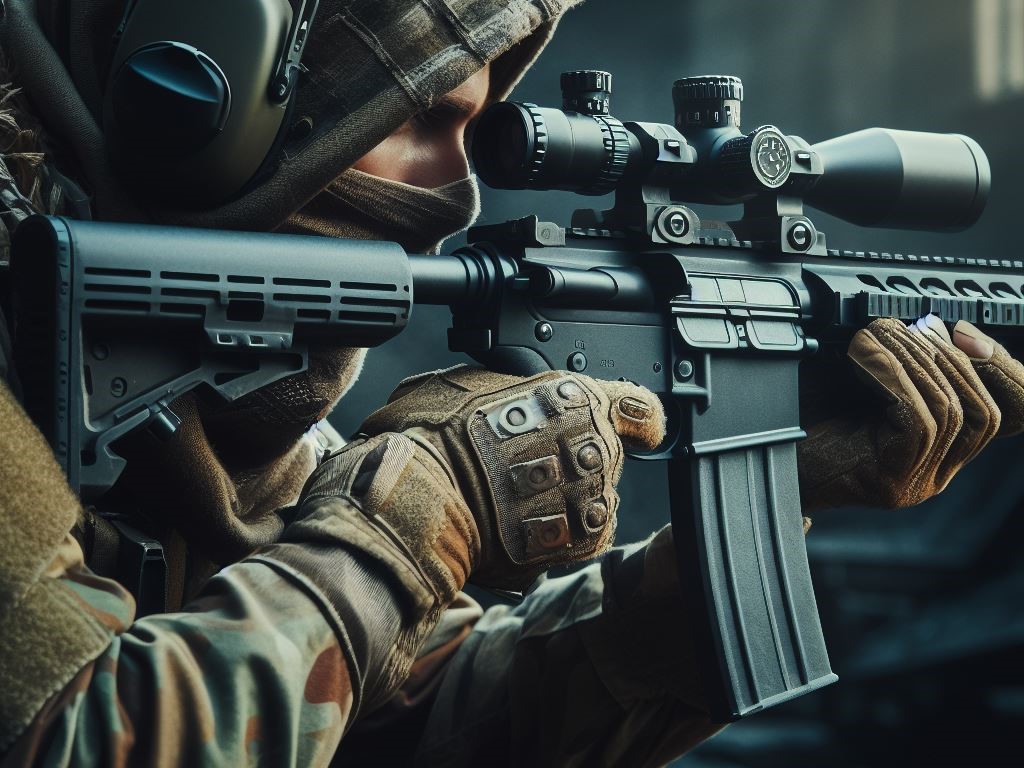
Unlock the hidden advantages of using a thermal scope and take your observation skills to the next level. Discover how the ability to detect heat signatures brings a new dimension to your surveillance game.
Experience enhanced visibility, even in the darkest corners and through foggy conditions. Plus, enjoy the added benefit of increased range and detection capability for a more comprehensive field of view. Leave no stone unturned as we dive into the remarkable advantages offered by this remarkable technology.
Ability to Detect Heat Signatures
The ability to detect heat signatures is a crucial feature of a thermal scope that makes it highly valuable in various applications.
- Identification of targets: Thermal scopes equipped with the ability to detect heat signatures allow users to easily identify and distinguish between living beings and inanimate objects. This is particularly useful in situations where visibility is low, such as during nighttime or in dense foliage.
- Enhanced situational awareness: By utilizing its ability to detect heat signatures, a thermal scope can provide valuable information about the presence and movement of individuals or animals in the surrounding environment. This can be highly beneficial in hunting and wildlife observation, search and rescue operations, as well as military and law enforcement scenarios.
- Tracking and surveillance: The remarkable ability to detect heat signatures empowers users to efficiently track the movement of targets, even in challenging conditions. This capability can prove to be crucial during military operations or in law enforcement situations, where effective decision-making depends on tracking and monitoring the activities of individuals.
- Search and rescue operations: Thermal scopes play a vital role in search and rescue operations by enabling the detection of heat signatures emitted by missing persons or survivors in disaster situations. Even if individuals are hidden or trapped, thermal scopes significantly increase the chances of locating and rescuing them.
- Safety and security: The ability of thermal scopes to detect heat signatures is instrumental in identifying potential threats or intruders in areas where traditional visual surveillance may be limited. They provide an added layer of safety and security by revealing hidden or camouflaged individuals.
The ability to detect heat signatures is a fundamental and invaluable feature that makes thermal scopes indispensable tools in various fields, enabling target identification, situational awareness, tracking, and search and rescue operations.
Enhanced Visibility in Low Light Conditions
Enhanced visibility in low light conditions is one of the key advantages of using a thermal scope. Unlike traditional optical scopes that rely on visible light, thermal scopes detect heat signatures emitted by objects. This allows them to provide clear imagery even in complete darkness or extremely low light situations.
Thermal scopes use a special sensor called a microbolometer to detect the infrared radiation emitted by objects. This radiation is then converted into a visual image based on the temperature differences. As a result, the thermal scope can effectively distinguish objects and provide a clear picture, regardless of the lighting conditions.
With enhanced visibility in low light conditions, thermal scopes are valuable tools for various applications. They are particularly useful for hunters, allowing them to track animals during dawn or dusk when visibility is poor. Similarly, search and rescue operations can benefit from thermal scopes to locate individuals in dark or obscured environments.
In military and law enforcement scenarios, thermal scopes provide a significant tactical advantage by allowing personnel to see clearly in low light situations, increasing situational awareness and enabling them to detect potential threats effectively.
When choosing a thermal scope, it is crucial to consider the resolution and image quality, as this can determine the level of detail visible in low light conditions. The refresh rate and detection range are also important factors to ensure swift and accurate target acquisition. Additionally, battery life and durability should be considered to ensure the scope can withstand demanding conditions.
To truly enhance visibility in low light conditions, investing in a high-quality thermal scope is essential. By providing clear imagery and detecting heat signatures, these scopes offer a significant advantage in various scenarios.
Remember, when purchasing a thermal scope, consider the resolution, refresh rate, battery life, and durability to ensure optimal performance in low light conditions.
Increased Range and Detection Capability
When selecting a thermal scope, it is essential to consider the increased range and detection capability. The ability to accurately detect and identify targets from a longer distance can greatly enhance effectiveness and overall experience. Here are some key points to keep in mind:
- Resolution: To ensure clear and detailed images, even at longer ranges, opt for a thermal scope with high resolution. A higher resolution allows for better target identification and reduces the risk of false alarms.
- Detection range: The maximum detection range of the thermal scope should be taken into account. It determines how far objects can be spotted and recognized. A longer detection range provides greater flexibility and a wider field of view.
- Optical zoom: Choose a thermal scope with optical zoom capabilities to magnify the target and maintain image clarity, even at longer distances. This allows for better target identification.
- Digital enhancements: Look for features such as digital zoom and image enhancement technologies, as these can extend the effective range of the thermal scope and improve visibility in challenging conditions.
- Target tracking: Consider thermal scopes with advanced target tracking capabilities. These features enable continuous analysis and tracking of moving targets, offering increased situational awareness and detection accuracy.
When selecting a thermal scope, it’s crucial to find the right balance between range, detection capability, and your specific needs. Evaluate your requirements, consider the environment and scenarios in which the thermal scope will be used, and choose a product that offers increased range and detection capability tailored to your purposes.
Types of Thermal Scopes
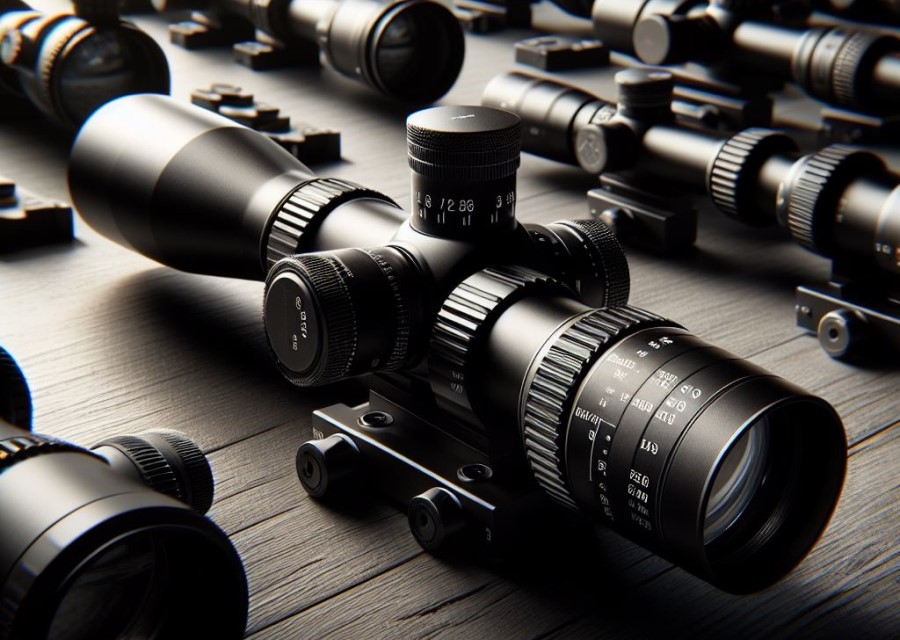
When it comes to thermal scopes, there are different types that cater to specific needs. In this section, we’ll explore two sub-sections: clip-on thermal scopes and standalone thermal scopes.
Brace yourself as we dive into the world of thermal imaging technology, discovering the features and functionalities that make these scopes invaluable for hunters, law enforcement professionals, and outdoor enthusiasts alike. Get ready to uncover the secrets behind these powerful tools that enhance visibility and provide a tactical edge in any situation.
Clip-On Thermal Scopes
Clip-On Thermal Scopes, a popular choice for users, are an ideal way to enhance your existing optical sight. These scopes offer increased functionality and versatility for various applications.
- One of the major advantages of clip-on thermal scopes is their easy installation. These scopes can be quickly and hassle-free attached to the front of your existing daytime optics.
- Another benefit is that there is no need for sight adjustment with clip-on thermal scopes since they are mounted in front of your existing sight. You can continue using your preferred aiming point without any modifications.
- Clip-on thermal scopes have the advantage of day and night capability. They can be used during the day and at night, providing you with 24/7 functionality. With thermal imaging capabilities, these scopes allow you to detect heat signatures even in complete darkness.
- Investing in a clip-on thermal scope is a cost-effective solution compared to purchasing a standalone thermal scope. Upgrading your current optics is possible without having to buy a completely new device.
- By using a clip-on thermal scope, you can reduce the weight of your gears. There is no need to carry two separate devices, making it more convenient for extended hunting trips or other missions.
Clip-on thermal scopes provide the advantages of thermal imaging technology while maintaining the familiarity and ease of use of your existing optical sight.
These scopes are a valuable addition for hunters, law enforcement personnel, and military operators, offering improved detection capabilities and increased situational awareness.
Standalone Thermal Scopes
Standalone thermal scopes have become a popular choice for many users due to their versatility and ease of use. There are several key features and advantages that make these scopes highly desirable.
First and foremost, standalone thermal scopes provide high-quality imaging. They offer excellent resolution and image quality, enabling clear and detailed thermal imaging. This is crucial for accurate identification and detection of heat signatures.
Portability is another significant advantage of standalone thermal scopes. These scopes are designed to be lightweight and compact, making them highly portable. This is especially beneficial for hunters and outdoor enthusiasts who need to move and navigate easily.
Furthermore, standalone thermal scopes come with an integrated display. This means there is no need for additional equipment or devices. It makes them convenient and user-friendly, offering a seamless experience.
Another advantage is the extended battery life of standalone thermal scopes. These scopes are equipped with long-lasting batteries, ensuring extended operation time in the field. This is particularly important for outdoor activities where access to power sources may be limited.
In addition to their performance, standalone thermal scopes are also known for their durability. They are built to withstand harsh conditions, including rugged terrains, extreme temperatures, and water exposure. This ensures that they remain durable and reliable, even in challenging environments.
When choosing a standalone thermal scope, it is important to consider factors such as resolution and image quality, refresh rate and detection range, and battery life and durability. By understanding your specific needs and requirements, you can select a standalone thermal scope that best suits your purposes. Always prioritize image quality, durability, and portability when making your decision.
Considerations When Choosing a Thermal Scope
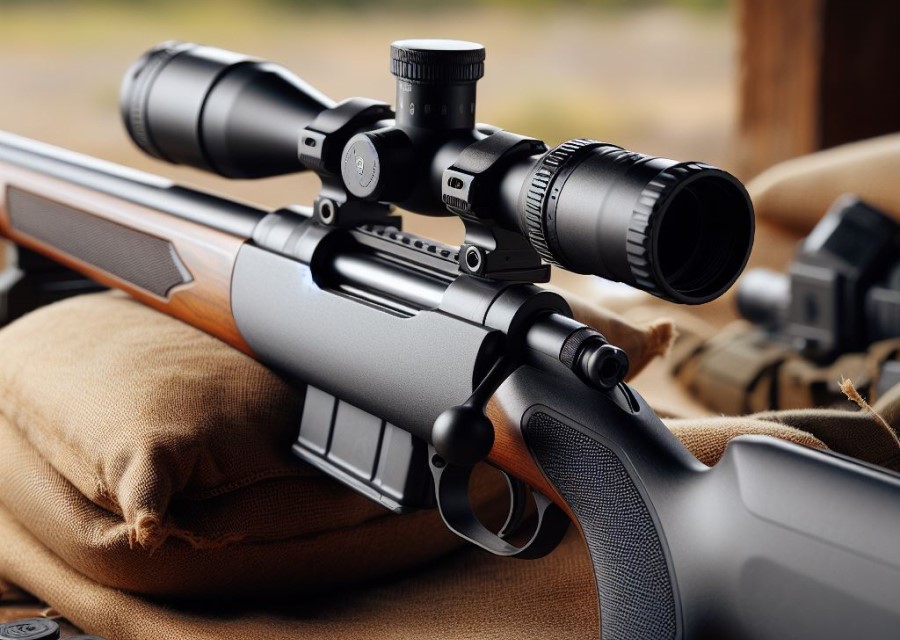
When choosing a thermal scope, there are several important considerations to keep in mind. From resolution and image quality, to refresh rate and detection range, and even battery life and durability – each aspect plays a crucial role in the performance and effectiveness of these devices. So, let’s take a closer look at what factors to consider when selecting a thermal scope and how they can impact your experience in the field.
Resolution and Image Quality
When considering the resolution and image quality of a thermal scope, it is important to prioritize clarity and detail in thermal imaging.
Resolution
A higher resolution allows for finer details to be observed in the thermal image. Opting for a higher resolution thermal scope, such as one with a resolution of 640×480 pixels, ensures a sharper and more defined image.
Higher resolutions, such as 640×480 pixels, can provide greater clarity in the thermal image, making it easier to differentiate between objects and identify potential threats. Lower resolutions, such as 320×240 pixels, may still provide usable imagery, but details may be more difficult to discern.
Image Quality
The image quality is determined by factors such as the clarity, contrast, and accuracy of the thermal imaging. Look for a thermal scope that provides clear and crisp images with accurate color differentiation.
A thermal scope with good image quality will offer clear visibility of heat signatures, ensuring that you can accurately detect and identify targets or objects of interest. Choosing a thermal scope with superior image quality will enhance your overall viewing experience and enable you to make more informed decisions in various scenarios.
It is worth noting that a higher resolution thermal scope generally comes at a higher cost. Therefore, consider your specific needs and budget when selecting a thermal scope with the appropriate resolution and image quality for your requirements.
Refresh Rate and Detection Range
The refresh rate and detection range are two fundamental aspects to take into account when selecting a thermal scope.
When choosing a thermal scope, it is important to consider the refresh rate. Opting for a higher refresh rate, like 60Hz or 120Hz, provides a smoother and more fluid image, minimizing motion blur and enhancing target tracking capabilities.
The detection range is another critical factor to consider. It determines the thermal scope’s ability to detect heat signatures. Look for a scope with a long detection range, such as 1000 yards, to ensure optimal performance in a variety of scenarios.
On the other hand, a lower refresh rate, such as 30Hz, may result in a slightly choppy image and potential lag when tracking fast-moving targets.Likewise, a shorter detection range, like 500 yards, may limit your ability to accurately detect distant targets.
A higher refresh rate proves particularly advantageous for activities such as hunting and law enforcement, where quick target acquisition is of utmost importance.On the other hand, a longer detection range allows for better situational awareness and the ability to spot targets that are farther away.
It’s important to note that the refresh rate and detection range may vary across different thermal scope models and brands. Consider your specific needs and use cases to determine the appropriate refresh rate and detection range for your application.
Battery Life and Durability
When selecting a thermal scope, it’s crucial to take into account both its battery life and durability. Here are a few important factors to consider:
- Battery life: The duration for which a thermal scope can be used without requiring a recharge or battery replacement. Opt for scopes that offer extended battery life to ensure uninterrupted operation during long periods of use.
- Durability: A thermal scope should be able to endure different environmental conditions and rough handling. Look for scopes made with high-quality materials, such as ruggedized housings and shock-resistant components, to guarantee longevity and durability.
- Water resistance: If you anticipate using the thermal scope in wet or rainy conditions, it’s vital to choose a scope that is water-resistant or waterproof. This ensures protection of internal components from moisture, enabling reliable performance in any weather.
- Impact resistance: Accidental drops or impacts may occur with a thermal scope, particularly during outdoor activities. Opt for scopes designed to withstand impacts and possess reinforced construction to ensure resistance against rough handling without sustaining damage.
Carefully evaluating the battery life and durability of a thermal scope is essential to ensure it fulfills your requirements and can withstand the demands of your intended applications. By selecting a scope with a prolonged battery life and sturdy construction, you can rely on it for accurate and dependable performance in various conditions.
Frequently Asked Questions
What is a thermal scope and how does it work?
A thermal scope, also known as an infrared scope or IR scope, uses infrared light to create images or thermograms. It focuses on thermal infrared light and creates a thermogram, allowing the user to see an object’s form as it relates to heat.
How is a thermal scope different from a night vision scope?
Thermal scopes can detect an object’s heat in various conditions, including daylight, darkness, fog, smoke, and camouflage, while night vision scopes require at least a small amount of light to work. Night vision scopes enhance visual clarity, while thermal scopes improve the ability to detect targets.
What are some additional features that can be found in thermal scopes?
Additional features that can be found in thermal scopes include multiple reticles, one-shot zero, memory for multiple zeroes, range finder, WiFi connection, and ability to record. These features enhance the functionality and versatility of the thermal scope.
What is the price range for thermal scopes?
The price range for thermal scopes varies greatly, from $1,000 to $10,000. The cost depends on factors such as image quality, resolution, refresh rate, additional features, and brand reputation.
What are some popular models of thermal scopes?
Some popular models of thermal scopes include the ATN Thor Thermal Rifle Scope, AGM Varmint LRF TS35-384, ATN Thor-Lt 3-6x thermal scope, AGM Rattler TS19-256, and ATN Ots-xlt 2.5-10x thermal viewer. These models offer a range of features, sensor resolutions, and price points to suit various needs and budgets.
What are the main applications and benefits of using a thermal scope?
Thermal scopes are commonly used for night hunting, particularly for crafty nocturnal animals like feral hogs and coyotes. The main benefit of a thermal imaging scope is target detection, making it useful for hunting under low visibility conditions. They also have applications in law enforcement, security, and surveillance systems, where they can aid in threat detection and provide visibility in total darkness.

